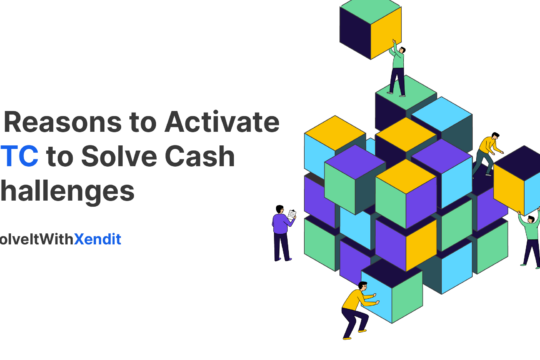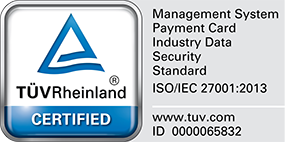What is a payment gateway?
If you own a business that requires you to receive and send payments, you’d likely know how important it is to provide the best customer service. Convenience, reliability and speed are all important aspects of the customer experience that can be improved with the right payments experience.
A payment gateway is a service that facilitates online transactions to occur between businesses and their customers. It is the secure infrastructure that authorizes the transfer of funds conveniently from your customers’ banks/e-wallets to your business. Read more about how payment gateways work in this article.

How does it help my business?
Businesses thrive when customers are happy and doing transactions is convenient. Do you remember the number of times you need to bug your customer in order to confirm that they’ve made a payment or asked them to take a screenshot/photograph of the bank transfer proof? And then having to later double check against your bank account to find that specific transaction to ensure that everything is in the right amount. At the end of it all, the only option your customer had to pay you with is through a bank transfer.
Using payment gateways that partner with multiple payment methods will give your customers the convenience of choosing the best option that suits them. Online and traditional businesses often use payment gateways to process bank transfers through virtual accounts, credit card and e-Wallet payments. The payment gateway takes away the need for your business to negotiate with individual banks and other financial institutions. Payment gateways may also offer added services like real-time notifications, automatic payment confirmations and data reconciliation.
Go live quickly
Payment gateways takes away the need for businesses to go through the lengthy process of negotiating with each individual bank and other financial institutions. Banks and financial institutions have agreements with payment gateways that typically give payment gateways the responsibility of doing a background check/know-your-customer (KYC) process before onboarding the customer.
Scale your business seamlessly
Payment gateways automate processes that were once manual and thus, allows your business to grow alongside the volume of transactions you handle without the need to expand your operations team. Xendit has customer success stories where merchants are able to keep its same finance team lean while scaling their monthly transaction volume from the hundreds to the thousands.
Elevate your customer experience
Your company’s and customers’ financials are often sensitive topics and it is important to have access to reliable and fast customer service to resolve any issues that arise during the transfer process. Payment gateways have dedicated customer support teams who are available to help resolve your needs. Some payment gateways provide more dedicated support than traditional providers: they may be available for longer hours and bank holidays, and can even advise on the most suitable payment methods for your business.
One integration to rule them all
Payment gateways are aggregators that pool together payment channels in one platform that you can integrate into easily without the need to speak with each channel separately and integrating into their platforms individually. This means that you’ll have access to multiple payment channels and options when you integrate with one payment gateway.
What makes a good payment gateway?
The best payment gateways are known to be fast, secure, simple to use, and supported by a fantastic customer support team.
Secure
Your customers will be sharing their financial information when making transactions and therefore it is imperative that the payment gateway you select has a good track record and has protection against fraud. Take note of the types of safety certifications your payment has, for example, Xendit is Payment Card Industry Data Security Standard (PCI DSS) compliant and is TUV certified.
Simple
Using a payment gateway that integrates with multiple banks and other payment options make for easy and fast transactions that achieves smooth customer experiences. Xendit has integrated with multiple payment providers which you can plug into with a single registration with Xendit. It can be used easily with your choice of Live URLs, Web/mobile checkout or API integration.
Service
A lot can go wrong and you’ll need to solve problems quickly when dealing with sensitive information like your company or customer’s financial details. Test the customer service of a payment gateway by sending a customer support email. Payment gateways like Xendit are well known for their focus on their customers, with a personalized customer service team on standby, daily across live chat, emails and calls during office hours of 8am – 10pm on weekdays, and 9am – 8pm on weekends and public holidays.
Speed
Timely payments are key in building trust with your customers and partners. Therefore, it’s important to pick a payment gateway which has good uptimes and fast settlement speeds. It should also provide you with tools to automate and scale your processes, be it APIs or bulk transfer tools to avoid time consuming manual processes.
Other important features that payment gateways should have:
Global
It can be very helpful to your business to allow customers to pay in the currency of their choice. Having a payment gateway that allows you to accept different currencies and that already has experience serving businesses globally can help you scale your business more easily. Xendit is currently serving hundreds of businesses beyond Indonesia and Philippines.
Affordable
Take note of the fees associated with using the payment gateway to ensure that the cost fits your company’s budget. Fees include contract, subscription and per transaction fees. Xendit offers affordable and competitive pricing; with no set-up or maintenance fees, Xendit has a simple pay-as-you go payment scheme.
Speed to innovate
Customer and business needs change quickly, it is important to find a payment gateway that is innovative and willing to build the solutions and features you need to make your business thrive. Xendit constantly works on services beyond simplified payments to help your business thrive and scale (loans provision, data analytics, eKYC, etc.).
Features
Payment gateways may offer additional services that may help your business save operational costs (report generation, payment management and monitoring, etc.). Note if the payment gateway has the functionality to accept international cards, provide fraud detection and 3-D Secure optionality. Xendit has an easy to use and free custom invoice billing service for their customers.
Scalability
Different payment gateways are written by different developers on different stacks. When planning to scale your business quickly, it is important to understand if your payment gateway can support the scale that your business wants to grow to. Are the processes automated? How much time would it take for you to make 10 times the volume of transactions you have today with the same payment gateways. Xendit facilitates bulk disbursements through a simple API integration or excel file upload, allowing your business to scale without adding any additional operational resources.
Reliability
Find a payment gateway that has a good track record that works well all the time. Take a look at the portfolio of other customers they serve to get a sense of who trusts their service. Xendit is trusted by hundreds of clients and growing, rest assured, you are in good hands.
How do I get started with a payment gateway?
Depending on the integration options of a payment gateway, you can offer your customers different payment experiences. The following some ways you can integrate with a payment gateway and how it will affect your customers’ experience.
- Payment links: When your customer makes an order, you can generate a payment link via the payment gateway’s dashboard. You can share this link with your customer to direct them to the payment gateway’s payment page to complete the transaction. This is the easiest way for your business to get started as you can make transactions immediately after signing up with the payment gateway. However, it requires some manual workflows and offers limited customization. This also adds an extra step for the customer.
- API integration: Build custom checkout or disbursement flows by connecting to the payment gateway’s APIs. Customers can initiate the transaction on your company’s site and does not need to be redirected to a third party site. The payment is processed on the payment gateway’s back end. This requires some development resources to integrate but your business will have control over your customers’ entire payment journey (and you’ll have to depend on the payment gateway’s off-site reliability).
- Third party sites (Shopify, WooCommerce, Opencart, Magento and more): Checkout on your company’s website and system will give you more control over your customer’s experience and the payment gateway will take care of the payment processing. The payment gateway will handle payment instruction, payment UX flow, payment number or card processing and the payment confirmation itself, so you do not need to change your order status manually when the order is paid by your end customer.









